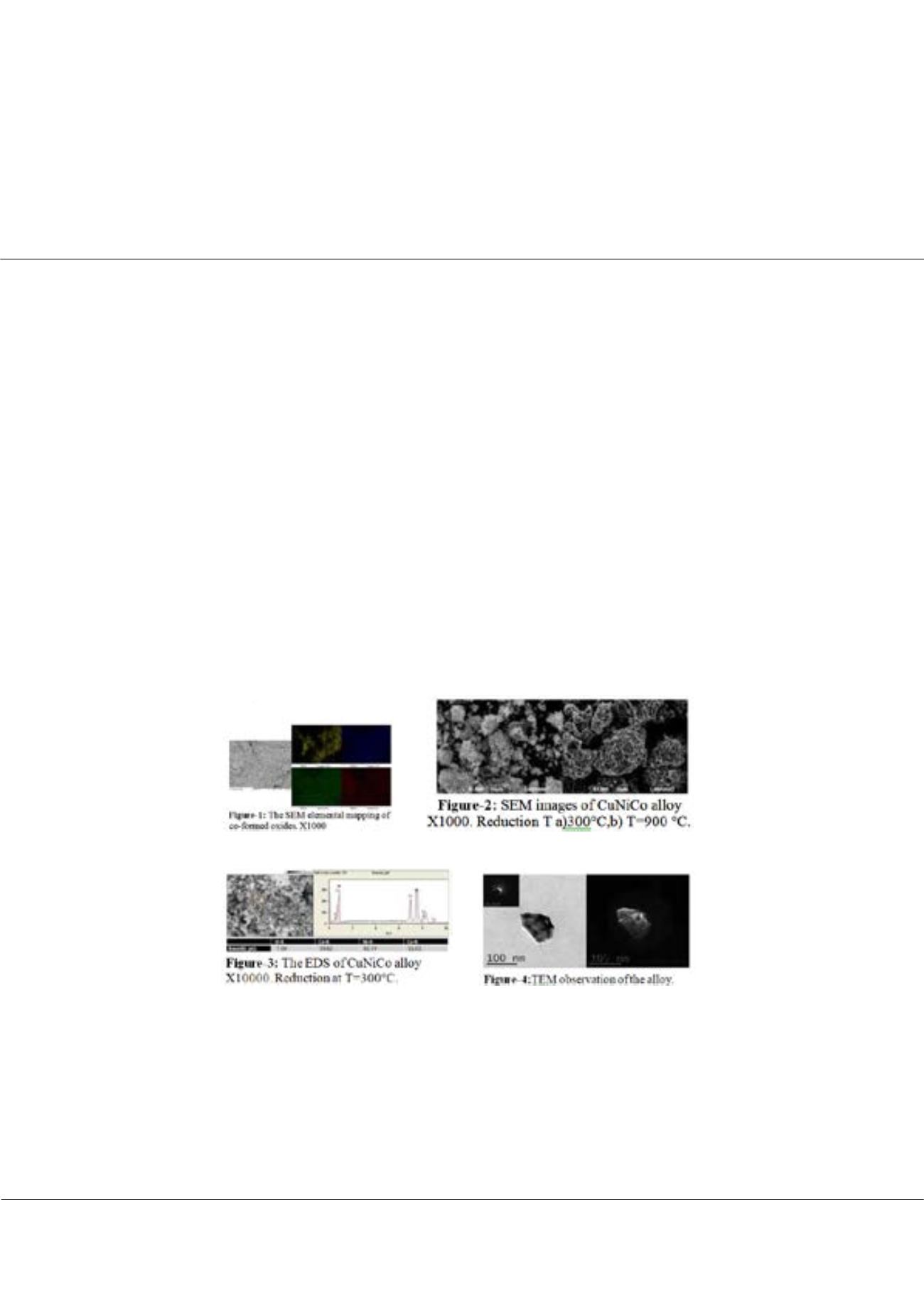

Page 114
conferenceseries
.com
Volume 6
Research & Reviews: Journal of Material Sciences
ISSN: 2321-6212
Advanced Materials 2018
September 04-06, 2018
September 04-06, 2018 | Zürich, Switzerland
21
st
International Conference on
Advanced Materials & Nanotechnology
Synthesis by hydrogen reduction and characterization of CuNiCo with nanoparticles content
E A Brocchi, Eliana P Marin
and
I G Solorzano
Pontifical Catholic University of Rio de Janeiro, Brazil
M
etals alloys are of great technological interest which may even increase if they are nanostructured. Also, it can be found
in the literature, same proposed chemical synthesis methodologies obtain different kind of materials with nanocrystal
particles content. Then, the main objective of this work was to obtain a CuNiCo alloy, by an alternative procedure capable
of generating nanostructured grains, followed by its preliminary characterization. It has been done by dividing the process
into two steps the first one is the thermal decomposition of a nitrate solution [Cu(NO
3
)
2
, Ni(NO
3
)
2
and Co(NO
3
)
3
] aiming to
obtain a homogeneous co-formed metal oxide. In the second step, these oxides are heated up to a desired temperature and
kept in a reductive flow of hydrogen, leaving the CuNiCo alloy as final product. The applied reduction temperatures were
300°C and 900°C. The materials obtained after each step were characterized by scanning electron microscopy (SEM) and
energy dispersive X-ray detector (EDS). As result of the first step, it was found that oxygen, Cu, Ni and Co were, as desired,
homogeneously distributed, as shown in the SEM elemental mapping (Figure-1). The after reduction obtained material present
different shape and particle size, depending on the applied reducing temperatures (Figure-2). The more circular and greater
size observed at 900°C confirms an increased sintering occurrence at higher temperature and the EDS results indicate the
expected composition for Co, Ni and Cu (Figure-3). The initial results given by transmission electron microscopy (TEM) have
shown the presence of particles with spherical morphology and a homogeneous distribution of the elements, which are sharing
the same crystal structure. Also, it was noted the presence of particles smaller than 100 nm in the CuNiCo alloy, as show in
Figure-4 (bright and dark fields).
Biography
E A Brochii completed Metallurgical Engineer (1975) and Master in Materials Engineering (1977) from Pontifical Catholic University of Rio de Janeiro (PUC-Rio).
Doctorate (PhD) in Extractive Metallurgy from Imperial College of Science and Technology, London (1983). Since this year he has been at the Department of
Chemical and Materials Engineering of PUC-Rio teaching and doing research focusing on the recovery of metals from mineral concentrates, and residues as well
as synthesis, normaly including a thermodynamic/kinetics studies related to pyrometallurgy routes such as general types of roasting (ex: chlorination) and hydrogen
reduction.
eabrocchi@gmail.comE A Brocchi et al., Res. Rev. J Mat. Sci. 2018, Volume 6
DOI: 10.4172/2321-6212-C3-021
















